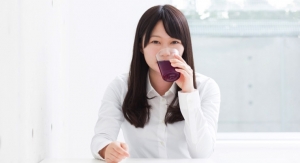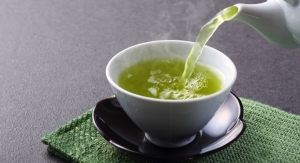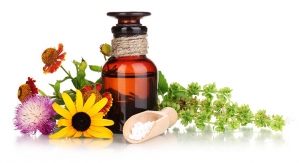Paul Altaffer & Grant Washington-Smith12.01.06
The ASEAN Region
Exploring the tremendous diversity and wealth of business opportunities this region has to offer.
By Paul Altaffer & Grant Washington-Smith
In the May 2006 issue of Nutraceuticals World, this column reported on Singapore, gateway to Southeast Asia and introduced the ASEAN (Association of Southeast Asian Nations) region. In this issue, we will once again look at Southeast Asia, discuss some of the emerging economies of the ASEAN region and analyze their potential as emerging markets for nutraceuticals, dietary supplements and functional foods.
The Association of Southeast Asian Nations, or ASEAN, was established in 1967 by five original member countries—Indonesia, Malaysia, Philippines, Singapore and Thailand. Five more countries have joined since then, including Brunei, Vietnam, Laos and Cambodia. The association has as its mission the economic, social and cultural development of the region, as well as the promotion of peace and stability.
The ASEAN region has a population of about 500 million, a total area of 4.5 million square kilometers, a combined gross domestic product of almost $700 billion, and a total trade of about $850 billion (The Association of Southeast Asian Nations website, www.aseansec.org). Most of the countries have GDP growth rates between 4-6% per year, with the exceptions of Vietnam and Cambodia at near 8% growth and Brunei at less than 2% growth. Singapore and Brunei enjoy high productivity with GDP per person (at Purchase Price Parity-PPP) of around $25,000 per year. Malaysia, Thailand, the Philippines and Indonesia have moderately high GDP (PPP) per person indicating they are on a path of continued growth and status as developing economies.
One of the features of the ASEAN organization is its commitment to the development of international trade and regional alliances. The member states are all very active developing and implementing trade deals. “The ten ASEAN countries have bilateral deals with each other; all have, in effect, individual bilateral deals with China. Others are being negotiated with India, South Korea and, in several cases, Japan. By one estimate, East Asia alone will have around 70 free-trade deals by the end of 2006” (The Economist, July 27, 2006).
The ASEAN community also recognizes healthcare as one of its 11 priority areas for harmonization among the members. As a result, the ASEAN community formed the ASEAN Alliance of Health Supplement Associations (AAHSA) to promote harmonization of regulations among the members and promote development and trade of related products (NutraIngredients.com, Europe, 1/8/06).
The ASEAN region is attracting a great deal of attention. It is a producer and exporter of commodities that are valuable to countries like China, India, Japan and South Korea. These countries are also importers and consumers for a wide variety of products, including nutraceutical products. Consumption in countries like Malaysia, Thailand, the Philippines and Indonesia is likely to keep pace with the growth in GDP for years to come. As the principal Asian economies develop and gain affluence, the trend toward expanding consumer purchasing power will likely trickle down throughout much of Southeast Asia.
While Singapore is the wealthiest (per capita) of the founding countries of ASEAN, the other four members (Indonesia, Thailand, the Philippines and Malaysia) report strong growth, raising per capita GDP and are demonstrating growth and promise as consumers. The high oil prices of a year ago has caused significant consumer pressure in these areas, yet consumers still seem willing to open their pocket books for the right products.
This overall trend for growth is right on for the nutraceuticals, functional foods and dietary supplements markets, where growth in the related areas outpaces growth in the countries’ GDP. However, the story is best told in two parts where Indonesia and Thailand demonstrate a healthy appetite for nutraceuticals, while the Philippines and Malaysia expect slower growth as inflationary pressures are putting a damper on consumer spending.
Supplement & OTC Sales
According to data from Euromonitor (see Figure 1), current retail sales (in US$ for 2005) are compared to the forecast sales (in US$ for 2010) for Dietary Supplements, OTC Remedies and Medicated Skin Care. Indonesia expects double-digit growth rates for the period through all categories, while Thailand, the Philippines and Malaysia expect solid growth potential in the OTC categories.
According to analysis from Euromonitor, the stronger performance in Indonesia is largely attributed to impressive growth in the sales of vitamins and dietary supplements. This was considered somewhat surprising as consumer purchasing power was negatively affected by the high fuel and commodity prices in 2005. Yet, Indonesians seem to be maintaining a growth trend toward prevention programs. Herbal product sales in Indonesia are affected by traditional medicines, most notably a mixture of herbs called “Jamu,” which many people consume for a variety of ailments even though it is not recognized by conventional medicine. In addition to “Jamu”, Indonesians consume a significant amount of traditional Chinese medicines that are mostly sold in Chinese-owned and operated drugstores called “toko obat.” Finally, there is limited availability of traditional medicines from India, but there is a current push toward the importation and sale of “ayurvedic” medicine in Indonesia.
In Thailand, diet programs seem to be one of the principal drivers of dietary supplement sales. While many diet programs fail due to poor consumer compliance with the program, growth is generated through recruiting new customers, rather than through maitenance and retention programs. This may partly be explained by the delightful and spicy food of the Thai. The Thai people will often reject supplementation and meal replacement programs especially if they require denial of their regular diet. On the other hand, multivitamin and dietary supplement sales are booming as consumers are taking on more Western type lifestyles. This translates into more sedintery, less physically active lifestyles, which are offset by a pressure to look good and be healthy.
In the Philippines, OTC remedy sales in 2005 increased at a rate of about 6% over 2004, about half the rate of growth for the year before. This too is explained by weakend consumer purchase power. Filipinos are price sensitive and have demonstrated less of an appetite for OTC products when prices increase. The bright spot in terms of growth is in child-specific OTC healthcare products. Euromonitor tracked growth at over 12% for 2005. This trend falls in line with Filipino family customs of caring for their children even if it means personal sacrifice.
Functionals Foods
As for functional foods, the prospects for continued growth are also excellent. According to data collected by Euromonitor (see Figure 2), Indonesia is expected to have double-digit growth in functional food and beverages, with Thailand not far behind. The trend seems to be caused by enhanced consumer awareness of fortified or healthy foods, affluence and the spread of Westernized lifestyles, as well as a concern for treating issues like obesity.
Indonesians continue to develop health awareness especially among the more affluent classes. These consumers are willing to pay a premium for healthy packaged food and beverages. Organic foods are also on the rise as regulations governing ogranic foods adopted in 2002 continue to take effect. Since more than 80% of the population is Muslim, most food items must be Halal certified and associated dietary restrictions must be observed. Similarly, the Hindu population has dietary restrictions that must be observed. Manufacturers that adapt to the sensitivities of a multi-cultural society should do well with their products in Indonesia.
The Thai people on the other hand, are a very traditional Buddhist society that do not naturally consume fortified foods. This is changing, though, as traditional lifestyles are becoming more Westernized—immigration brings new cultures as well as new products and services to the marketplace. As the Thai people adopt Western lifestyles, obesity and other related ailments are also becoming more prevalent, but so to is the consumption of diet and healthy products. One of the bright spots for Thailand, and a personal project of King Bumiphol, is the development of organic farming programs in Chiang Mai, which is located in the North of Thailand.
If developing one or more of these markets is in your company’s sights, plan on spending some time learning about these countries, their economies, but especially about their cultures. This article is unable to go into depth on the many important cultural, religious and social differences that comprise the ASEAN region. However, the ASEAN region has among the most ethnic, religious, historical and culturally diverse populations in the world. These many differences among the people significantly affect consumer habits and trends. What is good for one is nearly opposite to what is good for the other. Yet, in the midst of this melting pot of diversity, there is tremendous opportunity.NW






















